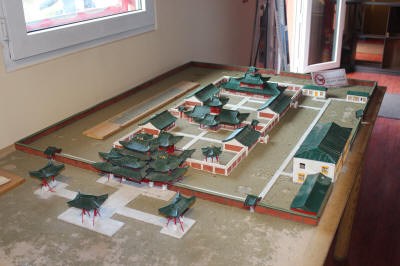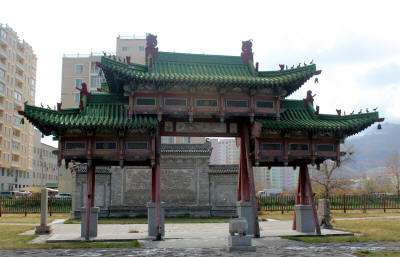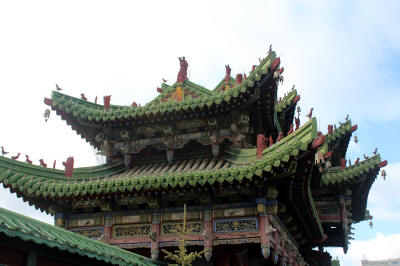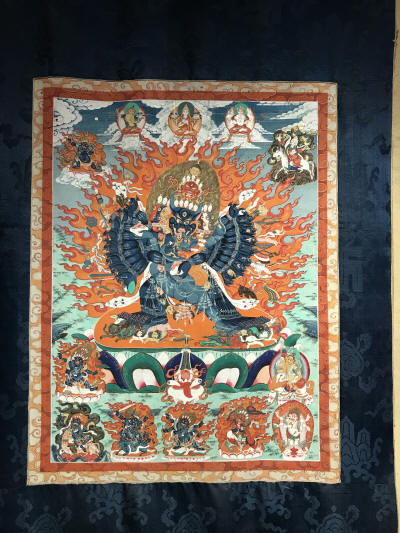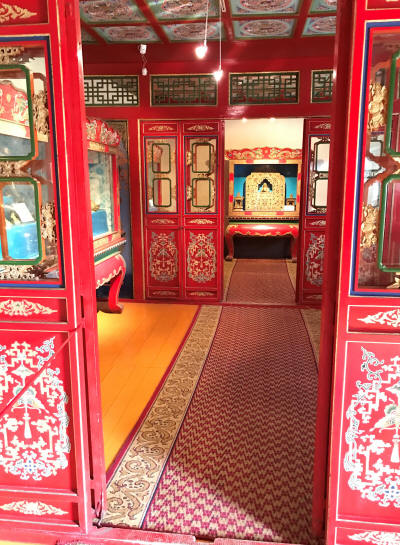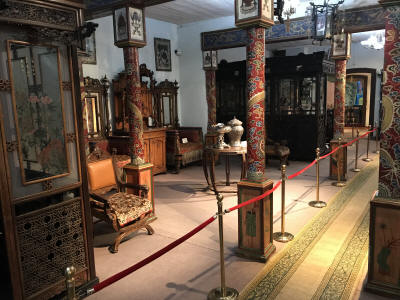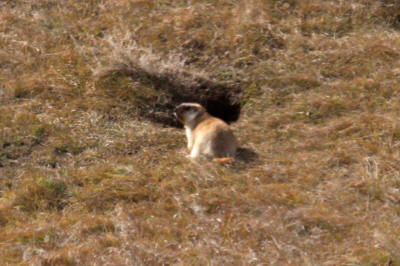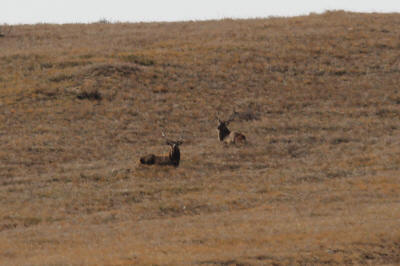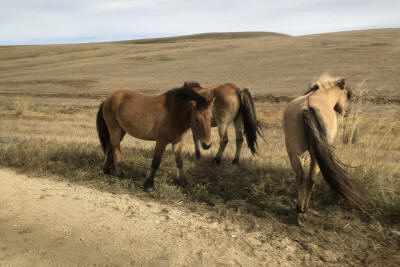Day 8 (October 7th)
We flew back to Ulaanbaatar and went from the
airport to the Winter Palace, the only of four palaces of the Bogd Khan
that survived the Russian purge of Buddhists from Mongolia (according to
Putin, the other palaces were torn down to make room for low income
housing). It also seems to have been called the Green Palace, or
perhaps the architecturally-chinese temples and the blocky European
palace have different names. It is one of the three temples that have
large free standing walls with dragons on them for reasons Ganzo told us
but didn’t stick. The Bogd Khan was the last emperor of Mongolia during
a short period of time after two Russian factions (the red army and the
white army) fought to occupy Ugla (now Ulaanbaatar); prior to that, he
was the Bogh Gengeen, which means the he was the Jebtsundamba Khutuktu,
which means something from a Buddhist hierarchy standpoint, from the
1870s until 1919 when the Chinese invaded Mongolia and stripped him of
his title… or something like that. His Queen was known as the White
Tara, which means she’s one of the fifteen female Buddas. Or maybe
it was a nickname. The history is a bit of a mishmash of small placards
in the palace and snippets of information from Ganzo and it’s as
confusing as the Tibetan pantheon, and really, it would be fascinating
to actually have the time to untangle the wickedly complicated political
and religious machinations that were going on at the time. It
makes U.S. history at the time seem likes childs play; other than
“remember the Alamo” and the Spanish-American war, not much was going on
our side of the world at the time.
But the Palace was the best exhibit of Mongolian history we saw while we
were there, with a collection of garments, thrones, beds, Buddhist art,
the Bogd Khan’s childhood toys, his taxidermy collection, and a highly
fashionable leopard skin ger (not snow leopards, which are sacred, just
regular old leopards, which don’t live in Mongolia anyway).

Inner grounds (the winter palace is outside the walls of the main temple complex)
|
|||||||||||
Day 9 (October 8th)
 The tourists in front of us chasing the Przewalski's horses away
All in all, this was probably the least exciting day we had on the trip. |
Day 10-12 (October 9th- 11th)
We were up again at 4am for a 6:10 flight to
Gurvan Saikhan airport, entry point to the national park of the same
name, more colloquially known as the Gobi desert. For this trip,
we’d be staying in (I’m sure this is going to be a surprise) gers.
But unlike our prior glamping expeditions, these were part of the Three
Camel Lodge, owned by (surprise two) Jalsa Urubshurow. The
Three Camel Lodge is an ecologically sensitive five star resort just
over the border of the national park. Having said five, you have
to put it in context; this is a resort in the middle of empty desert,
without any infrastructure to speak of, with staff that are recruited
from nomadic herders that have never owned a refrigerator. So they
were gers, but built to be permanent. There were two gers per
couple, actually, connected were a wall section should be, one the
bedroom ger and the other the bathroom ger. There were hot showers
and western toilets. Heating was still via the wood stove, and
still done in the evening and morning. There was a central
building with the communal restaurant, a small movie room, and a bar. If
you were expecting a high end western hotel, it would be a
disappointment. If you took into account what it took to build and
staff the place it was magnificent. Add to that the nightly
entertainment, which was modernized Mongolian… that is, traditional
Mongolian instruments and dance with a lot of more contemporary beat to
it. One performance was by a local music school that recruited
from the town’s boarding school (which is how all Mongolian children
outside the city are educated, since the herder’s gers are spread miles
apart in back country). A music school funded by Jasla. The
kids were awesome. The second performance was by a professional
group, more refined and polished and every bit as entertaining. So
we have to say without reservation, if you’re interested, you should try
to schedule a stay there. But if you do, do it fast. The day
we were leaving, Jalsa learned that the Three Camel Lodge was going to
make Conde Nast’s list top ten Asian places to stay. That normally
means people booking a year in advance.
 The camp site |
 The Bedroom Ger |
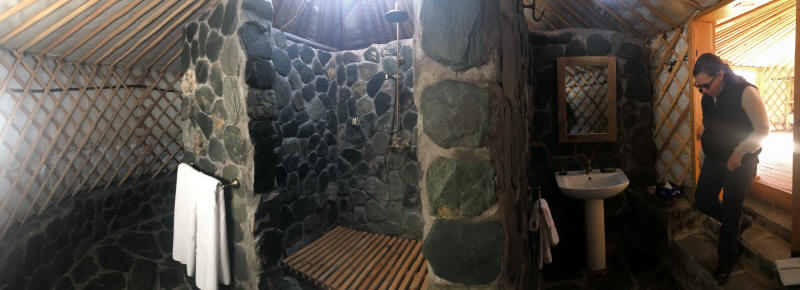 The Bathroom Ger |
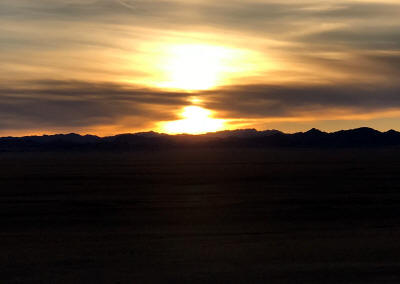 Sunset 1 |
 Sunset 2 |
 Sunset 3 |
 Sunset 4 |
The first day in the Gobi (a half day, since even leaving at 6am and with a relatively short flight, it took some time; the Gobi is vast and every location is at least an hour away from every other location), we went camel riding at one of the local (relatively speaking) camel herders. After a brief introduction with the herder and his wife in the ger, where we learned that snuff bottles and snuff bottle holders are not only the most prized position of a herder, but that there is an entire protocol around visiting centered on it:
- The owner of the snuff bottle
takes the bottle out of its special pouch (which is decorated with
patterns made from tiny knots that can take months to complete; Ganzo
told us some pouches would cost upwards of one million turgik, or $400)
unscrews the top, uses the built-in spoon to take a pinch, and then
places the top back on the bottle (keeping it unscrewed).
- The owner then uses their right
hand to hold the snuff bottle and, while their left hand touches their
right elbow, passes the bottle to another person (the person receives
the bottle in the same manner: right hand, open, left hand
touching the right elbow).
- The person who receives the bottle
lifts the top and sniffs, then optionally takes out a tiny spoonful and
puts it on the back of his right hand for snuffing (Ganzo said actually
snorting the tobacco was optional, but you had to at least sniff the
open top), and passes the bottle back to its owner.
- The process is then repeated with other people until everyone has had a turn.
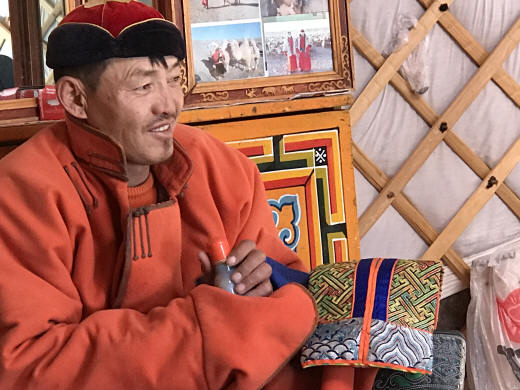 |
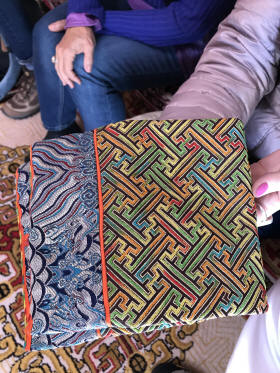 |

Camel riding was fun, and Alison and Dave have agreed that he can have a Golden Eagle if Alison can have a Camel. Alison's camel was a real boot-licker. Literally; the camel kept sidling up to Dave and licking his boot. We also explored some sand dunes in the same area.
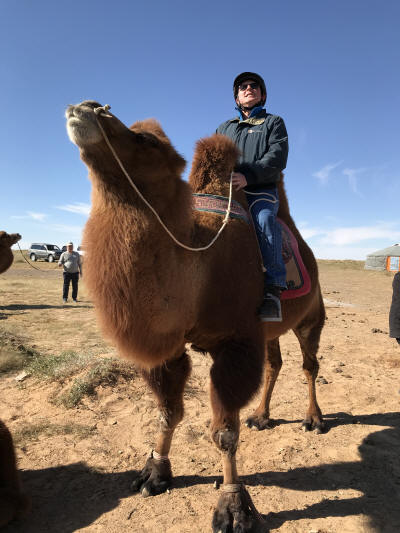 |
 |
 |
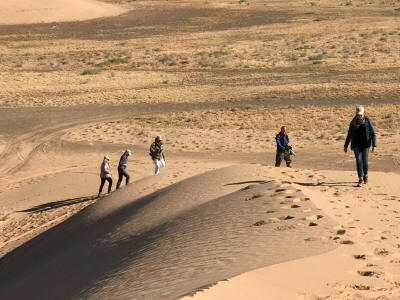 |
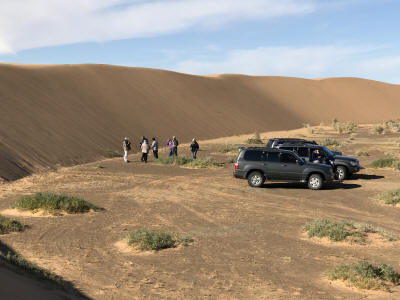 |
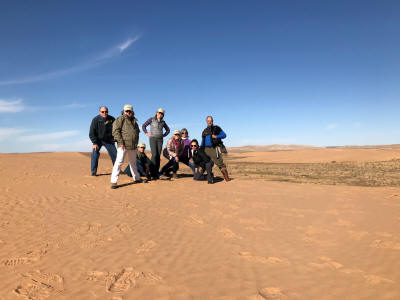 |
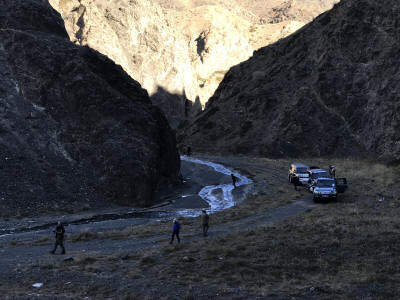 We off-roaded up the river bed to reach this spot |
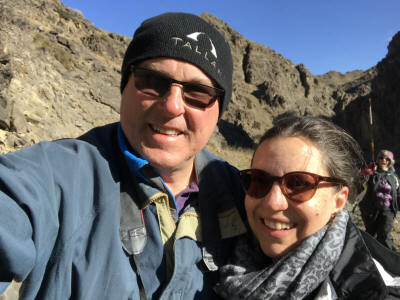 Have to do a selfie every once in a while |
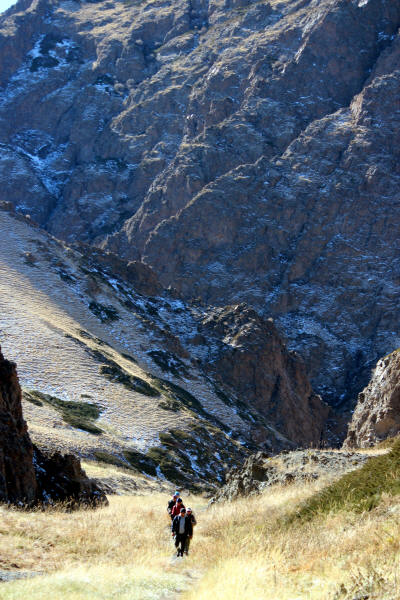 |
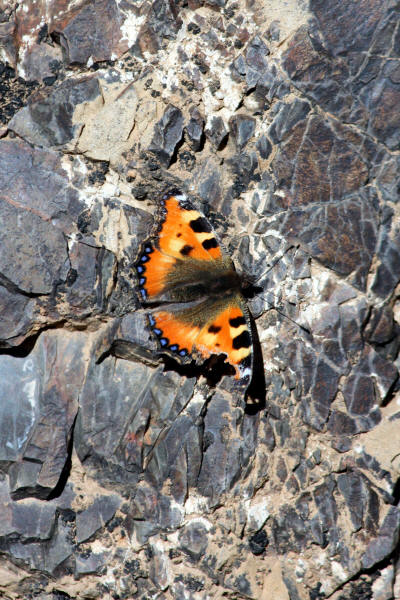 |
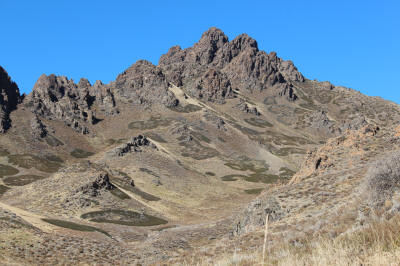 The golf course |
 Vultures in the distance |
 |
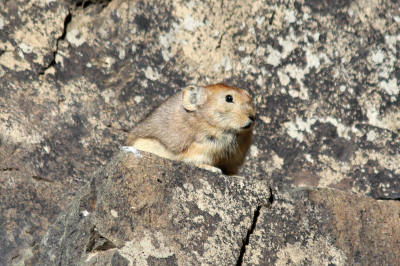 |
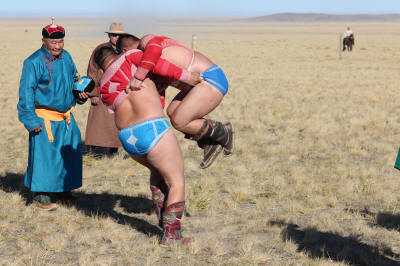 |
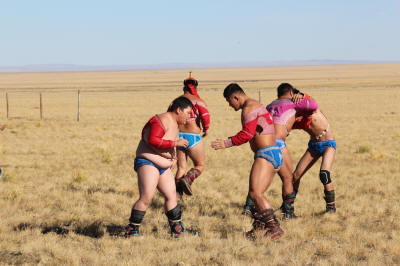 |
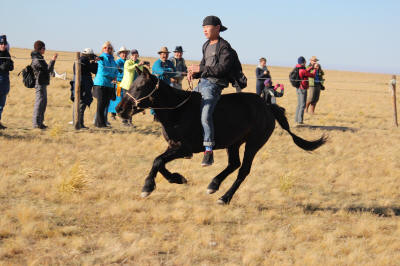 |
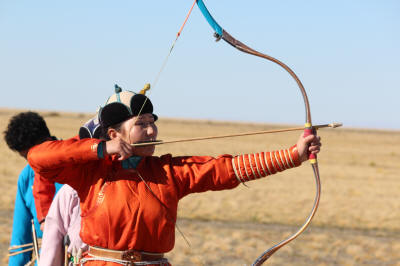 |
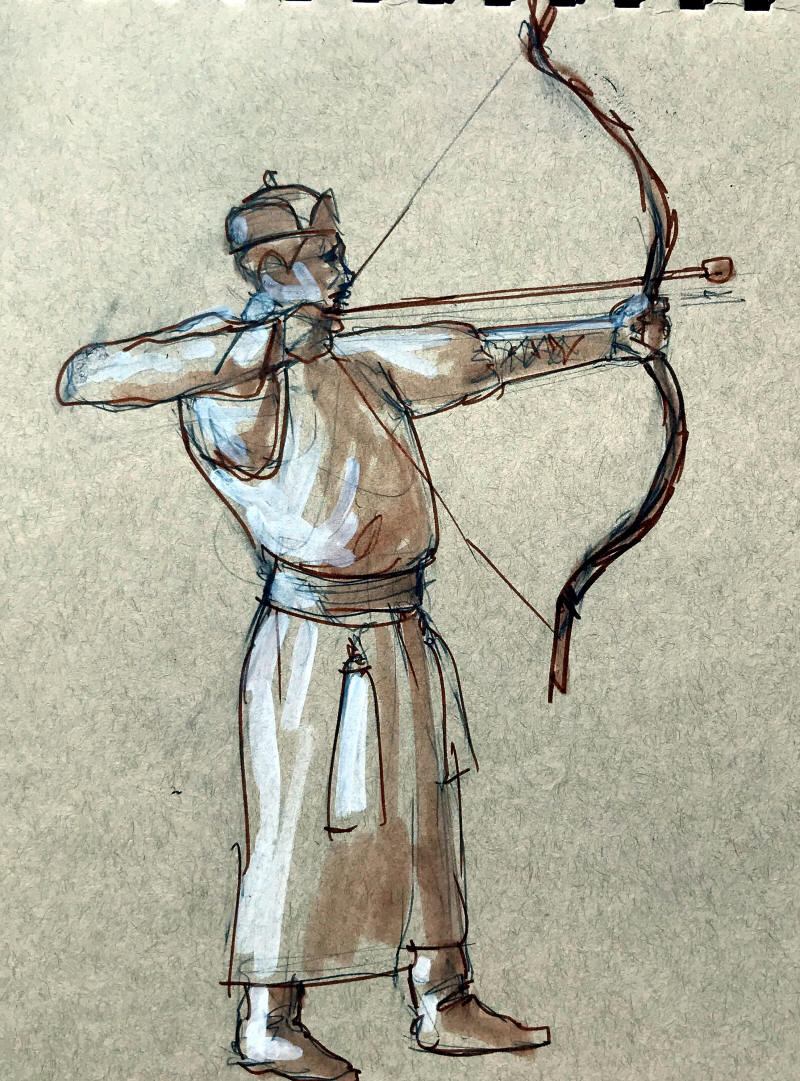
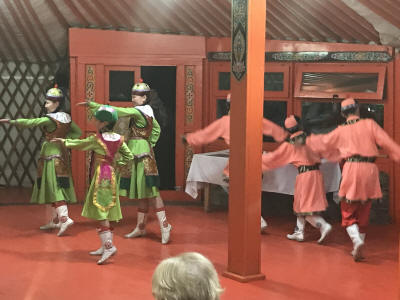 |
 |
Day three was four thousand year old petroglyphs in the morning and the flaming cliffs in the evening. The flaming cliffs are famed because of an archeological expedition by Roy Chapman Andrews in the 1920s that turned into a paleontology expedition when they found the first dinosaur eggs ever discovered (which we found out about in a 17 minute presentation in the movie room before we headed to the cliffs), along with hundreds of well preserved dinosaur skeletons. We hiked down the cliffs, which are more compressed sand than rock, watching the cliffs turn a brilliant red color in the setting sun. There was a small reception at the bottom of the cliffs, and then we headed back to the Three Camel Lodge. It was a great way to close out a very busy but very satisfying two weeks.
 |
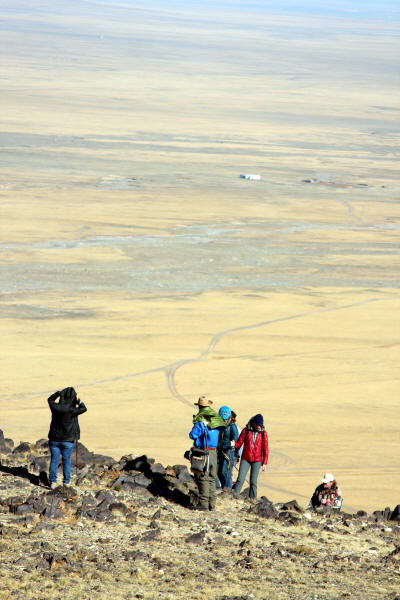 |
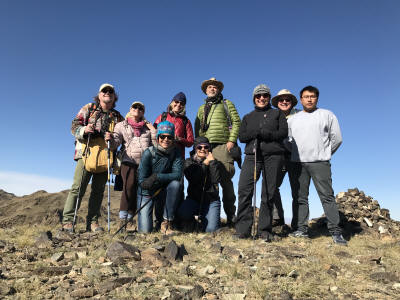 |
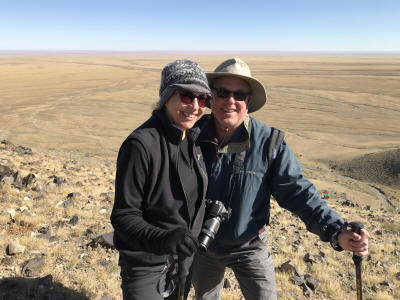 |
 The petroglyphs are from 3000 BC |
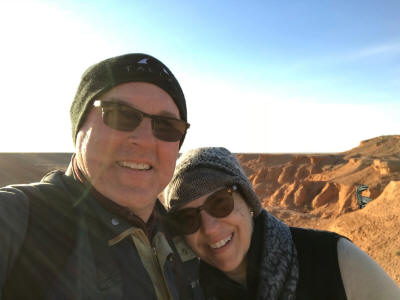 We were hoping to see dinosaur bones at the flaming cliffs, but anything there was carted off long ago |
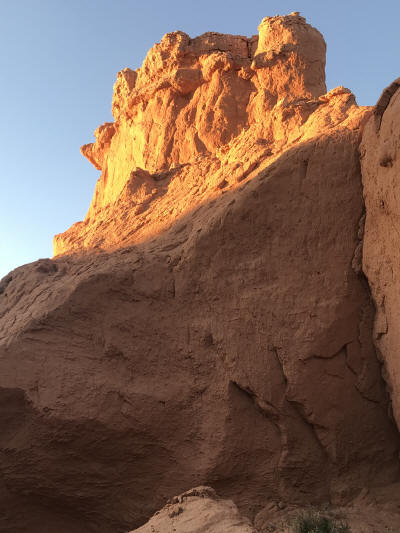 |
 |

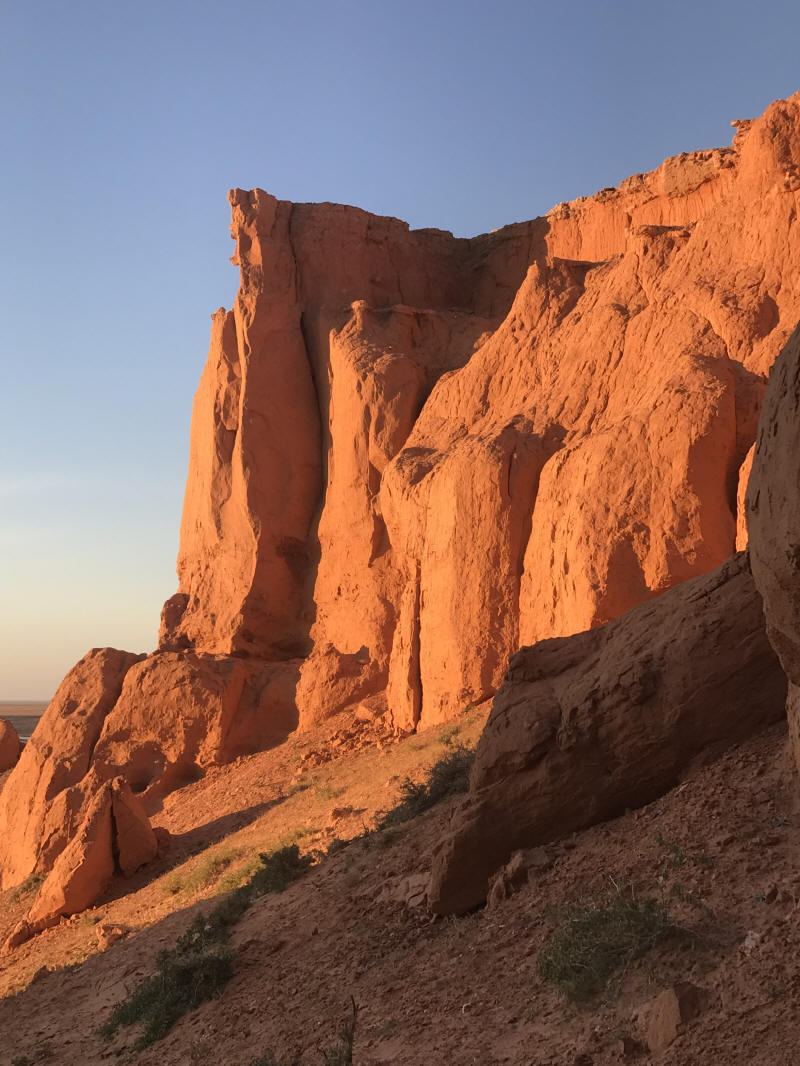
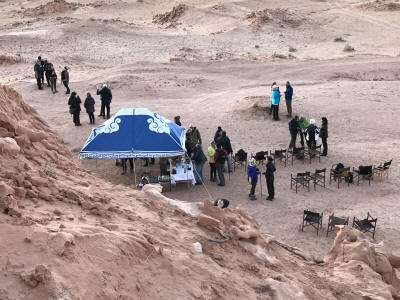 |
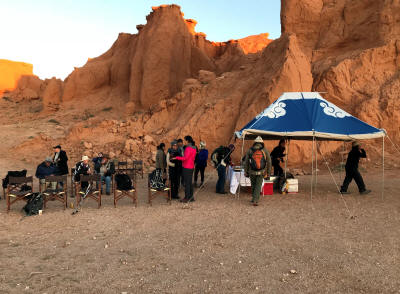 |
We flew back to Ulaanbaatar in the morning, watching one more sunrise and enjoying the adrenaline rush of 60 MPH off roading over the open plains to the airport.
 |
 |
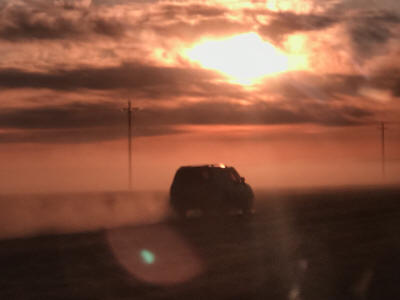 |
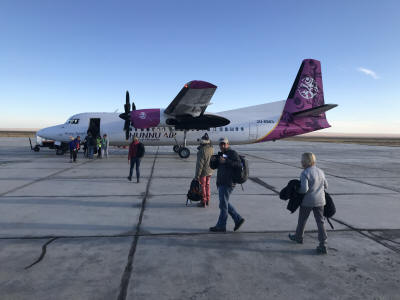 |
In the afternoon, we did one last activity, visiting the black market (so called because it was a black market back in communist days, but now it's just a square mile of vendors selling everything including the kitchen sink... really.
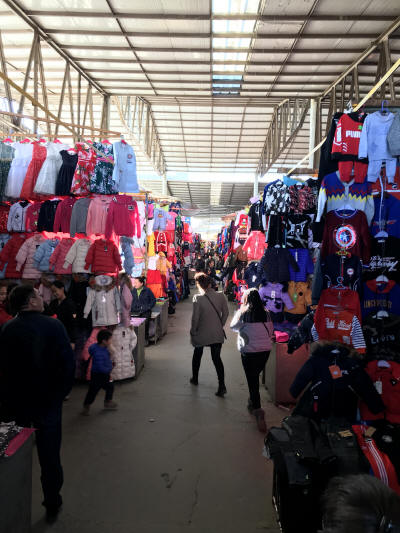 |
 |
We said goodbye to Ganzo in the lounge before our flight to Beijing, but our adventure wasn't quite over yet. There are original paintings on display in the lounge, and we decided to purchase one as a memento of the trip. What we didn't realize was that it came fully framed, and we had to shlep the thing around the world on three separate flights as carry on baggage.
 |
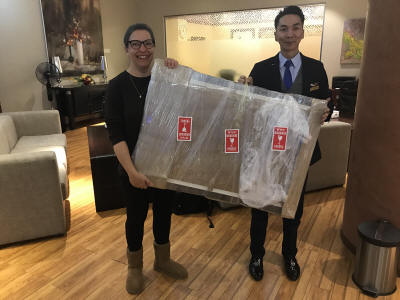 |
